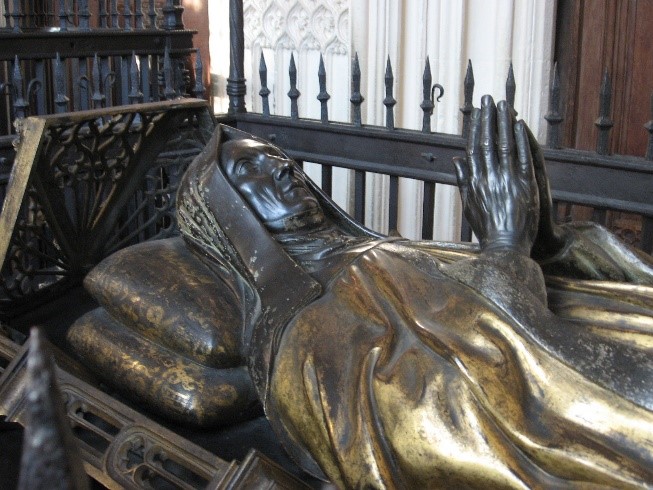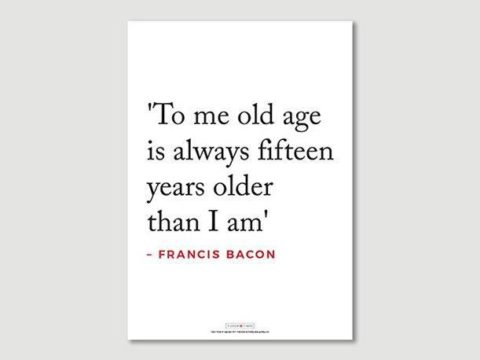Lady Margaret Beaufort
The
Beaufort family was descended from John of Gaunt, third son of Edward III, via
his third wife, Katherine Swynford. John of Gaunt and Katherine’s four children
had all been born whilst he was married to his second wife and were thus born
illegitimate.
Lady Margaret Beaufort was the grand-daughter of the oldest son, John Beaufort, 2nd Earl of Somerset, and his wife, the great heiress, Lady Margaret Holland.
In 1419 aged about 16, Lady Margaret’s father, John, 3rd Earl of Somerset, together with his younger brother Thomas, sailed for France as part of a new offensive in the Hundred Years’ War. He was captured at the Battle of Bauge in March 1421 and spent 17 years as a prisoner. Some four years after his eventual release in 1438, John married Margaret Beauchamp of Bletsoe, the widowed Lady St John, already mother of seven children. Margaret Beauchamp, although not of particularly distinguished birth, was a considerable heiress.
The new Countess of Somerset became pregnant almost immediately and Margaret was born on 31 May 1443.
Margaret lost her father when she was about a year old. This made her heiress to valuable estates across the South of England and the Midlands. In accordance with the practice of the time her wardship was granted to the Earl of Suffolk, who planned to marry her to his son John de la Pole.
Suffolk was one of King Henry VI's leading councillors but the domination of Henry by his wife Margaret of Anjou and Suffolk was unpopular with many of his nobles and Suffolk was attainted by Parliament.
With Suffolk’s fall from power Henry decided to have Margaret’s marriage to de la Pole annulled and grant her wardship jointly to his half-brothers Edmund and Jasper Tudor. He also gave to these half-siblings, of whom he was very fond, the titles of Earl of Richmond and Earl of Pembroke respectively.
When Margaret was twelve she was married to Edmund, and took up residence in the Bishop’s Palace at Llandyfai in Pembrokeshire. Despite her youth, her marriage was consummated and she soon fell pregnant. Unfortunately, Edmund died possibly of plague or perhaps another disease caught whilst he was imprisoned by supporters of the Duke of York, leader of the faction that wished if not to depose Henry VI, certainly take the government into their own hands.
Margaret retired for safety to Pembroke Castle, the seat of her brother-in-law Jasper. There she gave birth to a son, called Henry. The birth was long and hard and probably damaged Margaret’s fertility permanently. Within three months of Henry’s birth Margaret was remarried to Sir Henry Stafford, son of the Duke of Buckingham, a powerful supporter of King Henry VI.
The political situation was going from bad to worse and soon open war broke out between the King’s supporters, known as the Lancastrians and the Yorkists.
Margaret seems to have lived in comfort and harmony with Henry Stafford. He fought for Lancaster at the Battle of Towton, in 1461, alongside his father and his brother, both of whom were killed. Stafford himself made peace with the Yorkists, now led by York’s son Edward, who was proclaimed King as Edward IV.
Edward had a policy of reconciliation with Lancastrians and both Stafford and Margaret were permitted to retain their lands and play a full part in public life. Margaret attended court, where she was on good terms with Edward’s wife, Elizabeth Woodville, even attending the Queen at the birth of her daughter Bridget. Margaret was not, however, permitted to keep her son, who was transferred to the wardship of Sir William Herbert who also took Jasper’s title of Earl of Pembroke
In 1470, the Lancastrians returned, and Henry VI was once more placed upon the throne. Within the year Edward IV, who had escaped to the Low Countries, returned and battle was once again joined. The Lancastrians, under Margaret’s cousin the Duke of Somerset, had requested support from Stafford and Margaret. Stafford chose to fight instead for Edward IV. He was badly wounded at the Battle of Barnet and died in October 1471. This Yorkist victory necessitated the departure of Margaret’s son Henry and his uncle Jasper into long-term exile in Brittany.
Widowed for a second time, Margaret again made haste to remarry, this time choosing Lord Thomas Stanley. Stanley is rare in that he managed to negotiate the whole of the Wars of the Roses without ever actually fighting. Nevertheless, he was considered to be a supporter of the House of York so marriage to him would give Margaret some protection if her own loyalties were in doubt. During her marriage to Stanley, Margaret seems to have spent a good deal of her time in Lancashire on his estates, although she still continued to visit the court.
In 1482, Margaret began negotiations with Edward IV to resolve the ever-present sorrow of her son’s exile. The possibility of him returning to England and being granted the lands of the earldom of Richmond, in return for a promise of allegiance to Edward and, possibly, marriage to one of the King’s daughters was mooted. It seems unlikely that Edward would really have contemplated marrying his elder daughter Elizabeth to a penniless Lancastrian, but perhaps one of his younger daughters might have been disposed of in this way to neutralise Lancastrian threats.
Before these plans could come to fruition, Edward IV died suddenly, aged 40. He left two sons, Edward, now Edward V, aged 12, and Richard of Shrewsbury Duke of York, nine. The elder son had been in Ludlow in the Marches of Wales, learning the craft of kingship. The Dowager Queen sent for the young King and the coronation was planned.
At this point the late King’s brother, Richard, Duke of Gloucester, swept down from his estates in the North of England and took control of King Edward and his brother, who Queen Elizabeth had tried to keep with her in sanctuary at Westminster. Before long the brothers were in the Tower of London from which they never emerged.
Richard III was crowned alongside his wife, Anne Neville. Margaret took part in the ceremony, in the highly coveted role of train-bearer to the Queen. Nevertheless, within weeks Margaret was plotting to overthrow Richard. She was in contact with Elizabeth Woodville, who, together with her daughters, had retired to the sanctuary of Westminster Abbey, and also with the Duke of Buckingham.
This Duke, nephew of Margaret’s second husband, appeared to be one of Richard III’s warmest supporters raised a rebellion in the summer of 1483. It is unclear whether Buckingham was acting in support of Margaret’s son, Henry, or whether he was hoping to claim the Crown himself. The latter seems far more likely, as he had been so well rewarded by Richard it was it is difficult to imagine that he could have had more wealth and power under Henry.
Later historians have suggested that Margaret duped Buckingham into supporting her son although one might suppose that he was just as likely to have been trying to dupe her. Regardless of his motives, Buckingham’s rebellion failed.
Margaret’s activities were known to King Richard and she was attainted by Act of Parliament. Her lands were confiscated but in order to keep her husband, Stanley, on-side, they were granted to him for his lifetime. Margaret was to remain under house arrest in his castles in Lancashire.
Margaret and Buckingham were not the only opponents Richard faced and before long there was a steady stream of Yorkists heading for Brittany where Henry publicly proclaimed that should he be successful in reclaiming his rightful throne (as he saw it) he would marry Edward IV’s eldest daughter and thus unite Lancaster and York.
In the summer of 1485 Henry Tudor arrived on the shores of Pembrokeshire. Within weeks his small army had gathered men as it marched through Wales and across the Midlands to meet with Richard in Leicestershire.
At the Battle of Bosworth which took place on August 22 1485 Henry was victorious. Margaret was now the mother of the King.
Henry never forgot what he owed his mother, who, strictly speaking, had a better claim to the Crown than he had. However there does not appear to have been any point at which Margaret intended to have herself proclaimed Queen. It is unlikely that either the Lancastrians or the disaffected Yorkists would have fought for a woman.
Margaret was rewarded with new lands and her old property was immediately restored to her. Stanley was honoured with the earldom of Derby, although, despite being present at Bosworth, he had once again refrained from involving himself in combat.
Margaret became known as My Lady, the King’s Mother. She seems to have moulded her behaviour on that of Cicely Neville who had presided over the court of her son, Edward IV, in the early days, before his marriage to Elizabeth Woodville. Cicely had famously been horrified by her son’s marriage. Margaret, on the other hand, had been instrumental in agreeing Henry’s betrothal to Elizabeth of York.
Margaret played a considerable part in political and legal life throughout Henry VII’s reign. She was given the status of a femme sole i.e. she could manage her properties independently of her husband. This was a status normally only enjoyed by unmarried women of age and widows. It was also the status of a Queen. There are also many records of her being involved in quasi-judicial matters.
Foreign ambassadors commented on Margaret’s influence over her son, however this should not be understood as her ruling through him. Henry VII was always his own man. They worked in partnership because they had a similar outlook and she was the only person whom he truly trusted politically.
One of the duties Margaret undertook was codifying Royal protocol. Her regulations about Royal childbirth were followed by her daughter-in-law, her granddaughter, the Queen of Scots, and those wives of her grandson, Henry VIII, who bore children.
In her later years Margaret, always extremely devout, devoted herself to charitable and educational projects.
She patronised Caxton and the early printing press, even undertaking translations of devotional works herself. Her greatest monuments, however, are the Cambridge colleges that she founded – Christ’s College which was inaugurated during her lifetime, and St John’s for which she left instructions in her will.
Henry VII died in 1509 and Margaret lasted only long enough to see her grandson, Henry VIII, crowned before following her son to the grave.
She lies in sumptuous state in the Lady Chapel of Westminster Abbey, under a bronze cast by the Italian sculptor Pietro Torregiano.

Lady Margaret Beaufort
Family Tree







